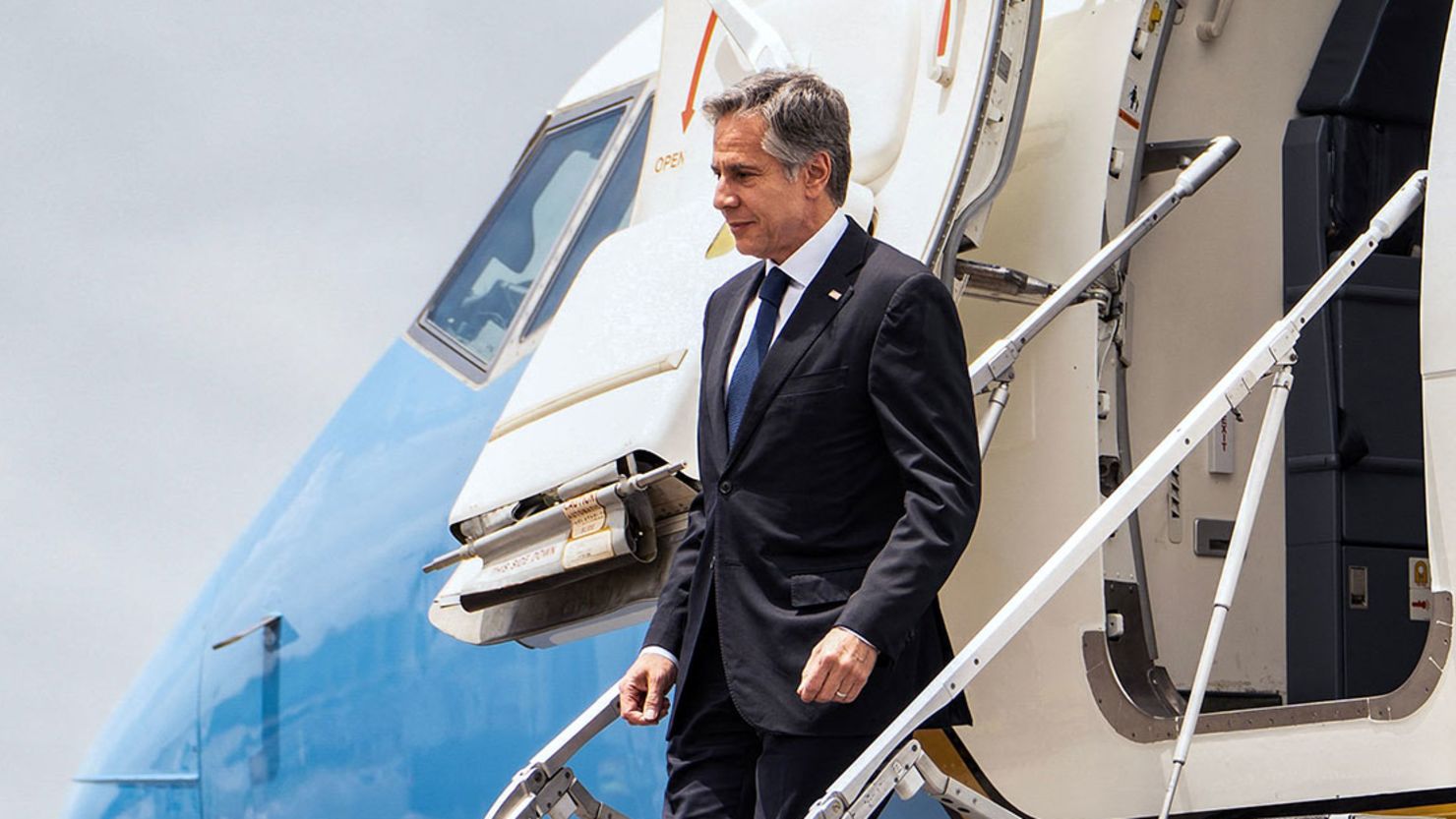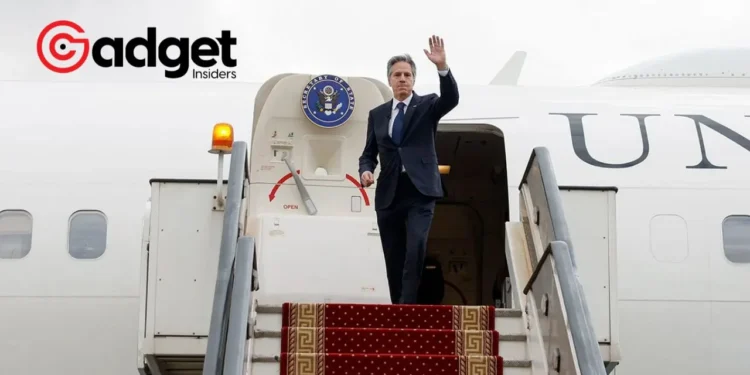In an unexpected twist to what should have been a routine diplomatic mission, US Secretary of State Antony Blinken found himself grounded and resorting to a road trip across Europe because of a faulty Boeing 737.
This incident casts a spotlight not only on the immediate logistical challenges faced by top US officials but also on the broader turbulence embroiling aviation giant Boeing.

The Unplanned Detour
While en route to a pivotal NATO summit, Blinken, along with other State Department officials, experienced a significant hiccup. Their Air Force C-40 jet, a bespoke government variant of the commercial Boeing 737, succumbed to a mechanical failure.
This unforeseen event forced the entourage to abandon their aerial route and embark on a 190-mile journey from Paris to Brussels by road. Despite the setback, the team arrived at the summit without further incident, albeit later than planned.
Boeing’s Repeated Missteps
The incident in question is not an isolated event for Boeing aircraft, nor is it the first time Secretary Blinken has faced such difficulties. Earlier in the year, a critical failure due to an oxygen leak on the same model of plane thwarted his return from Switzerland.
These episodes are part of a troubling pattern for Boeing, a company once revered as the pinnacle of aviation engineering.
Secretary of State Blinken's government plane faced mechanical issues, forcing him to bus four hours to a meeting with European leaders at NATO's headquarters. This incident is part of a series of problems with Boeing planes, prompting an investigation… https://t.co/dZq1JSLZH8
— The America One News (@am1_news) April 3, 2024
In recent months, Boeing has been thrust into the limelight under less-than-favorable circumstances. A chilling episode involving an Alaska Airlines flight saw a door plug detach mid-flight, creating a harrowing experience for passengers and crew.
Further investigation revealed a shocking oversight: the aircraft had left the Boeing factory missing essential components critical for flight safety. This revelation prompted the Federal Aviation Administration to ground a significant portion of the 737 Max 9 fleet, signaling deep-rooted issues within the company’s quality control processes.
A String of Incidents
Boeing’s woes are compounded by an array of incidents that have raised serious questions about the company’s commitment to safety and quality. From parts raining from the sky to a tire detachment during takeoff, the incidents paint a grim picture of Boeing’s current operational standards.
These mishaps not only endanger lives but also tarnish the storied legacy of an industry titan.

Reflections and Repercussions
As Secretary Blinken resumed his diplomatic agenda, the incident served as a stark reminder of the interconnected challenges facing global leaders and multinational corporations.
For Boeing, the journey ahead is fraught with challenges. Restoring trust and ensuring the unwavering safety of its aircraft will be paramount. Meanwhile, the diplomatic corps and global travelers alike watch closely, hoping for a return to the standards of safety and reliability that once defined air travel.
In an age where diplomacy and international relations are more interconnected than ever, the tools of the trade — from the jets that crisscross the skies to the protocols that ensure their safety — remain pivotal.
As Blinken’s unintended detour underscores, the reliability of these tools is indispensable, not just for the itinerary of one official, but for the fabric of global diplomacy itself.










